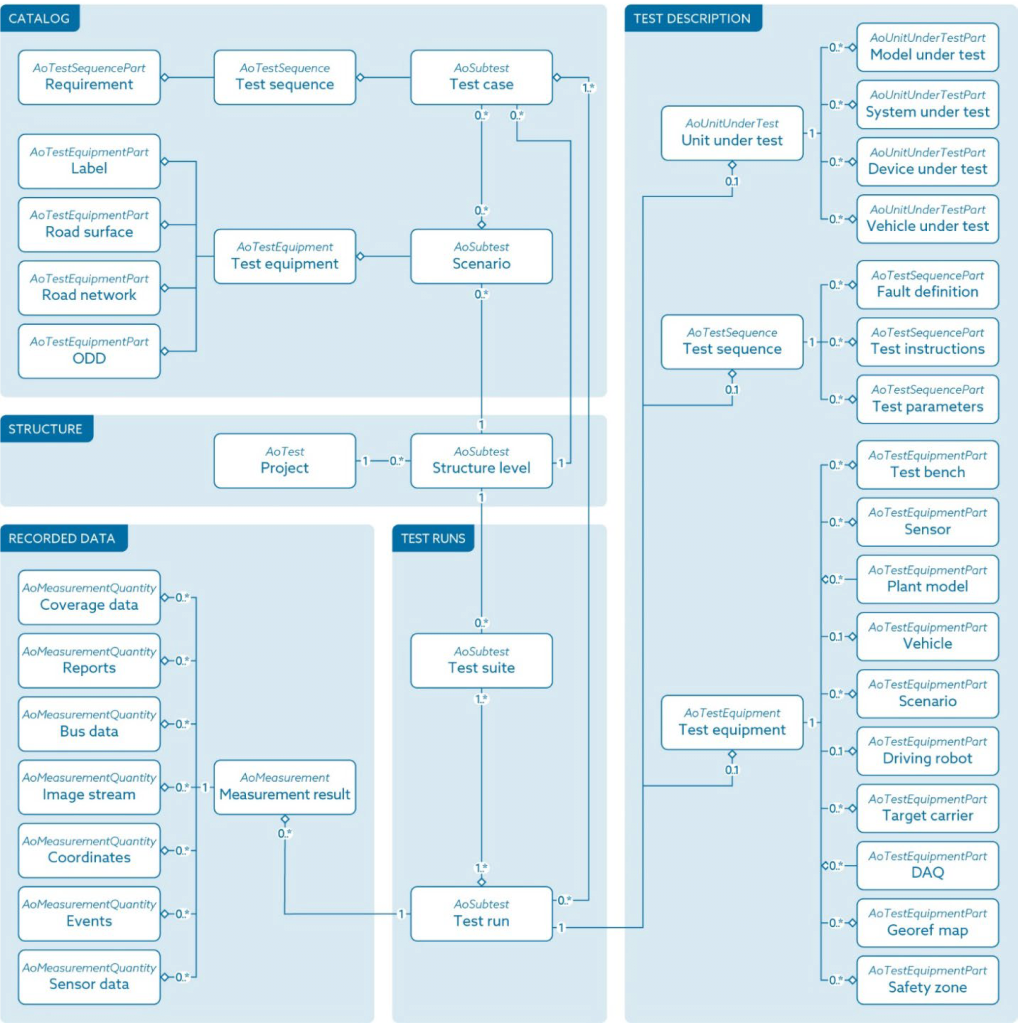Abo ut
An ASAM ODS model for Test Data Management in the field of ADAS/AD
Autonomous driving functions must provide evidence that they are safe. This happens, among other things, in the context of validation and homologation. The criteria to be taken into account are diverse: For example, a driving function must independently carry out the driving task within its defined operating domain, comply with traffic regulations and be able to switch autonomously to low-risk states.
All of this is continuously checked by different development and test teams using a wide range of test methods and tools. In order for the technical services to be able to release that, the test results must be transparently available to all those involved, be traceable over the long term and clearly evaluable. A consistent platform strategy with regard to test data management is essential for this.
At the end of 2022, the ASAM Test Specification Study Group recommended to use the ASAM ODS standard as a basis for test data management in the ADAS/AD domain. A large number of well-known companies from the automotive industry contributed to this recommendation. The following points were mentioned as advantages of ASAM ODS compared to proprietary solutions:
- ASAM ODS is a mature and widely used standard that has already proven itself in a large number of test domains as a basis for the administration and traceability of test results.
- The ASAM ODS data model has sufficient structure and flexibility to be able to describe and manage all test data from the ADAS/AD domain with the help of metadata. This includes, for example, test cases, recorded or generated driving scenarios, test specifications, as well as time series, bus and streaming data.
- ASAM ODS provides a standardized API which various tools can use for data access, e.g. to find and download scenarios, test cases and result data for reuse and further processing.
- With ATFx, ASAM ODS specifies an already widely used file format for the standardized exchange of meta and raw data, which can be uniformly used throughout the industry (OEMs, suppliers, test service providers, providers of test and development tools, local and global authorities, etc.). Use cases are, for example, the commissioning of internal and external test and simulation tasks, the sharing of test and simulation results for comparison and analysis purposes across tool, department and company boundaries, as well as the provision of data packages for homologation.
A first, draft application model for the use of ASAM ODS in the ADAS/AD domain has also already been proposed by the working group. You find more information about that subject here https://report.asam.net/ under the chapter “Test Data Management”.
The Working Group examined different test strategies and artefacts that play a role in the validation of autonomous driving functions. This can be test inputs, test outputs, or information needed to support test preparation. The artifacts were presented graphically and grouped according to their relationship to one another. The figure below gives an overview.

Figure: Example of a possible ASAM ODS Application Model for the ADAS/AD domain
With the model, the working group wanted to give a first impression of how the artefacts of the ADAS/AD domain can be mapped in an ASAM-ODS application model. The idea is that the existing ASAM ODS working group will now take up this application model and develop it further, in cooperation with specialists from the ADAS/AD domain. A corresponding project proposal for the Technical Steering Committee (TSC) of ASAM is currently being prepared.
Good experiences have already been made with such standardization work in other test domains, such as NVH (Noise Vibration Harshness) and passive safety. Ultimately, this makes important contributions to further improving the interoperability of test systems.
